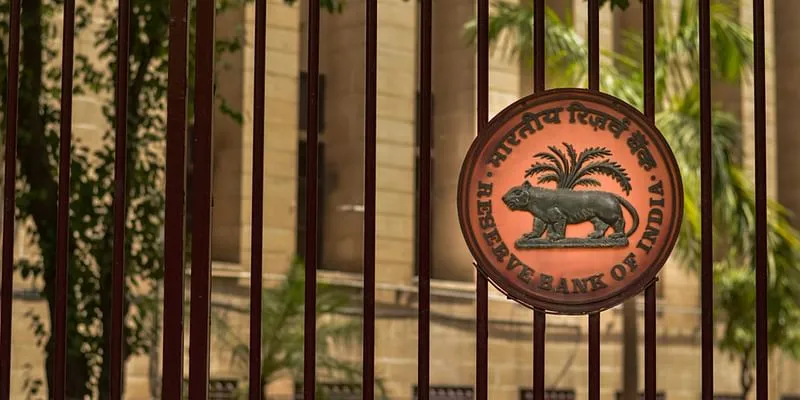Decoding RBI's moratorium and what lies beyond August for borrowers
The RBI's loan moratorium benefit is scheduled to end on August 31, 2020. Here's a look at the economics of it and the road ahead.

Reserve Bank of India
On March 27, 2020, in the wake of the Covid-19 pandemic, the Reserve Bank of India (RBI) announced a loan moratorium to de-stress the country's financial ecosystem.
The moratorium, which simply meant deferral/ postponement of loan repayments was:
- Applicable to all standard loans (including working capital facilities and credit card dues) outstanding with commercial banks and NBFCs as on March 1, 2020. Exceptions were carved out to exclude loans marked as 'bad' as on March 1, 2020; and
- For a period of three months (i.e. March 1, 2020, to May 31, 2020. Subsequently, this was extended by another three months from June 1, 2020, to August 31, 2020.
Two important things to note here include:
- It's just a temporary deferral of loan payments - not a waiver.
- Interest still accrues on the loan during the deferral period - there is no waiver of interest.
Loan moratorium precendents
The concept of loan moratorium is not a new one. The most recent precedent in India was the RBI's 60-day loan moratorium offer for small borrowers during the demonetisation phase.
The pandemic has forced countries, government's, and banks to re-think their policies and strategies to ease the financial burden on livelihoods and businesses. During this period many countries, including the UK, Singapore, Italy, Malaysia, etc. have offered loan moratoriums of different kinds targeting specific borrowers.

Image Source: ShutterStock
Borrower's perspective
The RBI's loan moratorium was only permission given to lending institutions to grant the moratorium. Hence, it was not mandatory for the borrowers to avail of this option.
Just like any financial asset, the moratorium too has its upsides and downsides.
The upside being:
- Easing up of cash liquidity crunch - as repayment schedules are deferred by six months;
- Delayed repayments on account of the moratorium, did not impact the borrower's credit scores or result in re-classification of such loans as 'sub-standard'.
The downside being:
- Though the repayment schedules are deferred, interest on loans continues to accrue, resulting in a higher cost of capital. Simply put, for an outstanding loan of Rs 1 lakh carrying an interest rate of 12 percent per annum, the interest will be Rs 1,000 per month. Now with the moratorium, the interest cost for three months goes up to Rs 3,030 (as against Rs. 3,000), on account of the 'interest on interest' factor. This additional interest factor will have a multiplier effect on the loan tenure/ EMIs until it is repaid.
Lender's perspective
While the moratorium brought some cheers to the borrowers, its impact on the lending institutions is not so cheerful.
Prior to Covid-19, India's banking sector had accumulated bad loans to the tune of Rs 9 lakh crores. This number is estimated to increase once the moratorium ends, given the current market outlook and unemployment levels.
Recent surveys estimate that at least one-third of India's loans would be under moratorium as of August 31, 2020. Even if 10 percent of these default in repayments post the moratorium, the lending institutions could potentially look at a huge surge in bad loans.
Interestingly, loans under moratorium have seen a steady decline since the initial three-month moratorium period. One of the major factors for this decline/ opt-out is the 'interest on interest' factor which pushed the cost of capital higher. While, this was a deterrent for a borrower, from a lender's perspective it was more of a blessing in disguise. It not only improved the liquidity and income position of the lender but also reduced the risk of loan defaults.
Recently, in a response filed by RBI with the Supreme Court (in connection with a petition seeking a waiver of the moratorium period interest), it cautioned that a waiver could impact the banks by as much as Rs 2 lakh crores (one percent of the GDP). The matter is pending adjudication.
Fundamentally, the health of any lending institution largely depends on its liquidity and income - both of which influence its lending capacity.
If the moratorium results in high bad loans and low income, the health of lending institutions are going to be adversely affected and could lead to a restriction on lending, as per current regulatory norms.
Keeping this aspect in mind, the RBI has now allowed a one-time restructuring of loans without classifying them as bad loans, subject to certain guidelines (yet to be notified).
In effect, if a borrower is under genuine financial stress, the banks can choose to restructure the loan with more realistic terms (increased tenure, reduced interest, etc.), as against a blanket deferral of repayments. The impact of these measures can only be gauged over time.
Leveraging the moratorium
'Interest on Interest' factor was the biggest talking point of the moratorium. Without this factor, leveraging the benefits of the moratorium to maximise returns would have been easy.
Simply put, if the moratorium period interest did not exist, then even the most conservative borrower could have maximised his returns by investing the monthly EMI savings (due to moratorium) in fixed deposits, which would have fetched returns of at least five percent per annum.
Without a waiver of the moratorium period interest, leveraging the moratorium benefits is a complex and risky affair. Nonetheless, a plausible one!
Before we get into how let's look at some data points:
- In March 2020, when the moratorium was first announced, the country's capital market indices (say, Nifty) touched 2020's lowest level - ~7500. Over the last six months, Nifty has surged ahead and touched 11300 in August 2020.
- To improve liquidity positions, the RBI consistently reduced the Repo rates, thereby impacting the lending rate offered by banks. Since March 2020 to date, there has been a reduction of 115 bps in the Repo rate - which on average translates to a reduction in lending rates by at least one percent. For example, if a housing loan in March 2020 carried an average interest of 8.4 percent per annum, the same loan would be available at 7.4 percent per annum or below in August 2020.
With this background, let us see how a more aggressive and risk-taking borrower may have leveraged the benefits of the moratorium:
- Say, a borrower had an outstanding loan of Rs 20 lakhs as on March 1, 2020. The loan carried an interest rate of 8.4 percent per annum and say the EMI was Rs 1 lakh a month (with Rs 14,000 being the interest portion).
- A six-month moratorium on the loan would have resulted in an additional interest cost of Rs 1,470, due to the 'interest on interest' factor (i.e. 8.4 percent per annum interest on the interest amount).
- As against this, investing the monthly savings of Rs 1 lakh (due to EMI deferral) in capital markets would have likely fetched a pre-tax return on investment of Rs 1.21 lakh (calculated based on month-on-month average Nifty movement).
- In May, post the Repo rate cut, if the borrower converted the loan to a 7.4 percent per annum interest, the revised monthly interest would be Rs 12,333 and the additional interest cost for the moratorium period reduces to Rs 1,338.
- In this example, at the end of the moratorium, the borrower would have earned a net return of Rs 1.20 lakhs (i.e. returns from capital markets less additional moratorium cost), by simply leveraging on the market factors at play. Additionally, by converting the loan to a reduced interest rate, the borrower also saved on the interest cost of loan.
It is important to note that the above example applies more to a borrower who has a high-risk appetite as investments in capital markets in March 2020 would have been a highly aggressive stand. While it may not apply to all borrowers across the board, the moot point of this is that every financial decision requires careful planning to maximise its potential.
The road ahead
As on date, the RBI has not announced an extension of the moratorium. However, as the economic outlook still looks bleak, it is speculated that there may be an extension on the cards, albeit only for stressed sectors severely affected by the pandemic that include hospitality, entertainment, and real estate, etc.
If no extension is announced, here is our best judgment assessment for a borrower, on what next after August 2020:
- Not availed the moratorium: Nothing changes - it is status-quo.
- Availed the moratorium, and are in genuine financial stress: Speak to your bankers to look at loan restructuring to ease the financial crunch.
- Availed the moratorium but can repay the loans: Consider an immediate one-time settlement/ pay-off of accumulated moratorium interest (including interest on interest). Due to the multiplier effect, if the moratorium period interest is not paid off/ settled immediately once the moratorium ends, it could significantly push the interest cost of capital. Hence, instead of adjusting the EMIs/ loan tenure, it is advisable to settle the moratorium period interest immediately.
(The authors are from Merican Consultants, a full-service accounting, financial, risk, and tax consultancy firm based in Bangalore. For more on this and related topics, you can reach out to them at [email protected] and [email protected].)
Edited by Dipti D








